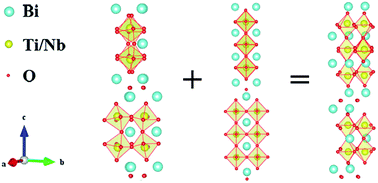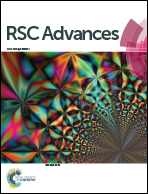Superlattice-like structure and enhanced ferroelectric properties of intergrowth Aurivillius oxides
Abstract
Aurivillius oxides with an intergrowth structures have been receiving increasing interest because of their special structures and potential outstanding ferroelectric properties. In this work, Bi3LaTiNbFeO12–Bi5Ti3FeO15 and Bi3TiNbO9–Bi3LaTiNbFeO12 compounds were successfully synthetised using a simple solid-state reaction method. X-Ray diffraction patterns and scanning transmission electron microscopy high angle annular dark field (STEM-HAADF) images confirm the 2–3 and the 3–4 intergrowth structures in Bi3TiNbO9–Bi3LaTiNbFeO12 and Bi3LaTiNbFeO12–Bi5Ti3FeO15 compounds, respectively. A superlattice-like distortion in these oxides was proposed resulting from the combination of sub-lattices with different a and b parameters, which was validated by XRD refinements and Raman spectra. Polarization-electric field tests and pulsed polarization positive-up negative-down measurements demonstrate that such superlattice-like structures can effectively enhance the intrinsic ferroelectric polarization and coercive field of these oxides, especially when compared with their component oxides Bi3TiNbO9, Bi3LaTiNbFeO12 and Bi5Ti3FeO15. Simultaneously, ferroelectric Curie temperatures of Bi3TiNbO9–Bi3LaTiNbFeO12 and Bi3LaTiNbFeO12–Bi5Ti3FeO15 oxides are lowered because of the internal stress in the superlattice-like structure. Nevertheless, the paramagnetism of the samples is hardly influenced by their structure, while mainly related to their iron content, in which iron has a similar effective magnetic moment around 3.4–3.9.

- This article is part of the themed collection: Editors' Collection: Ferroelectric and Multiferroic Materials


 Please wait while we load your content...
Please wait while we load your content...